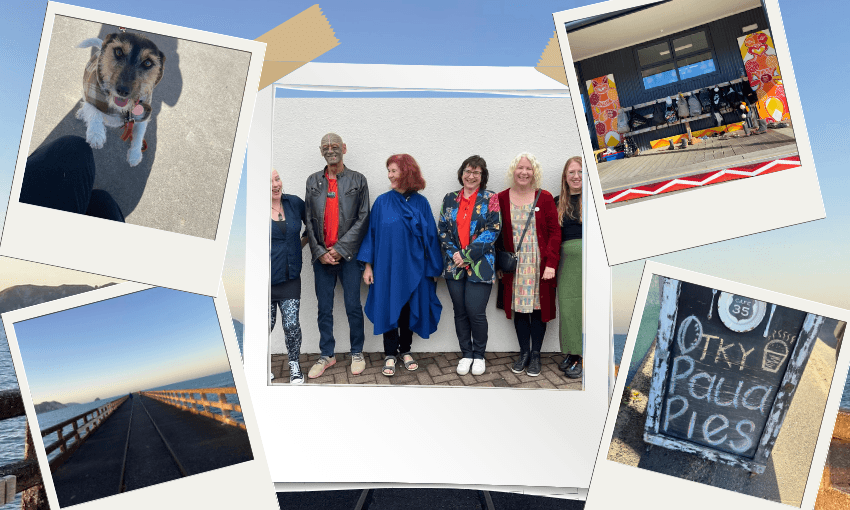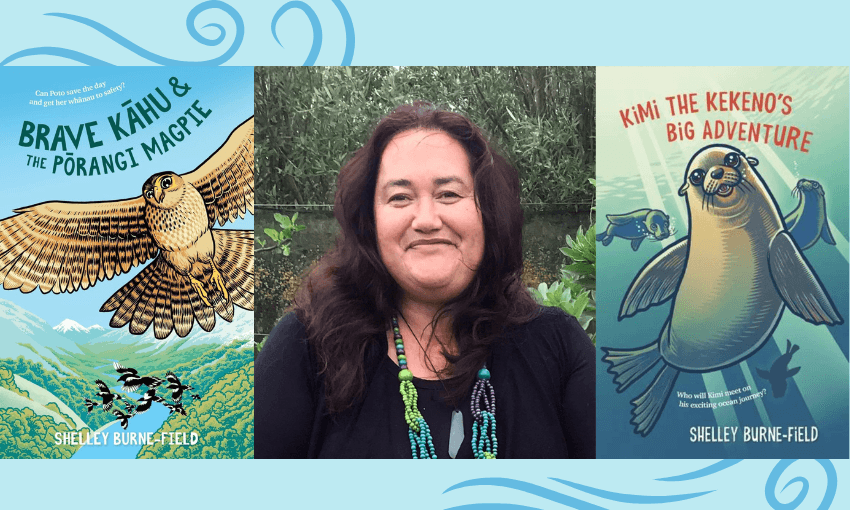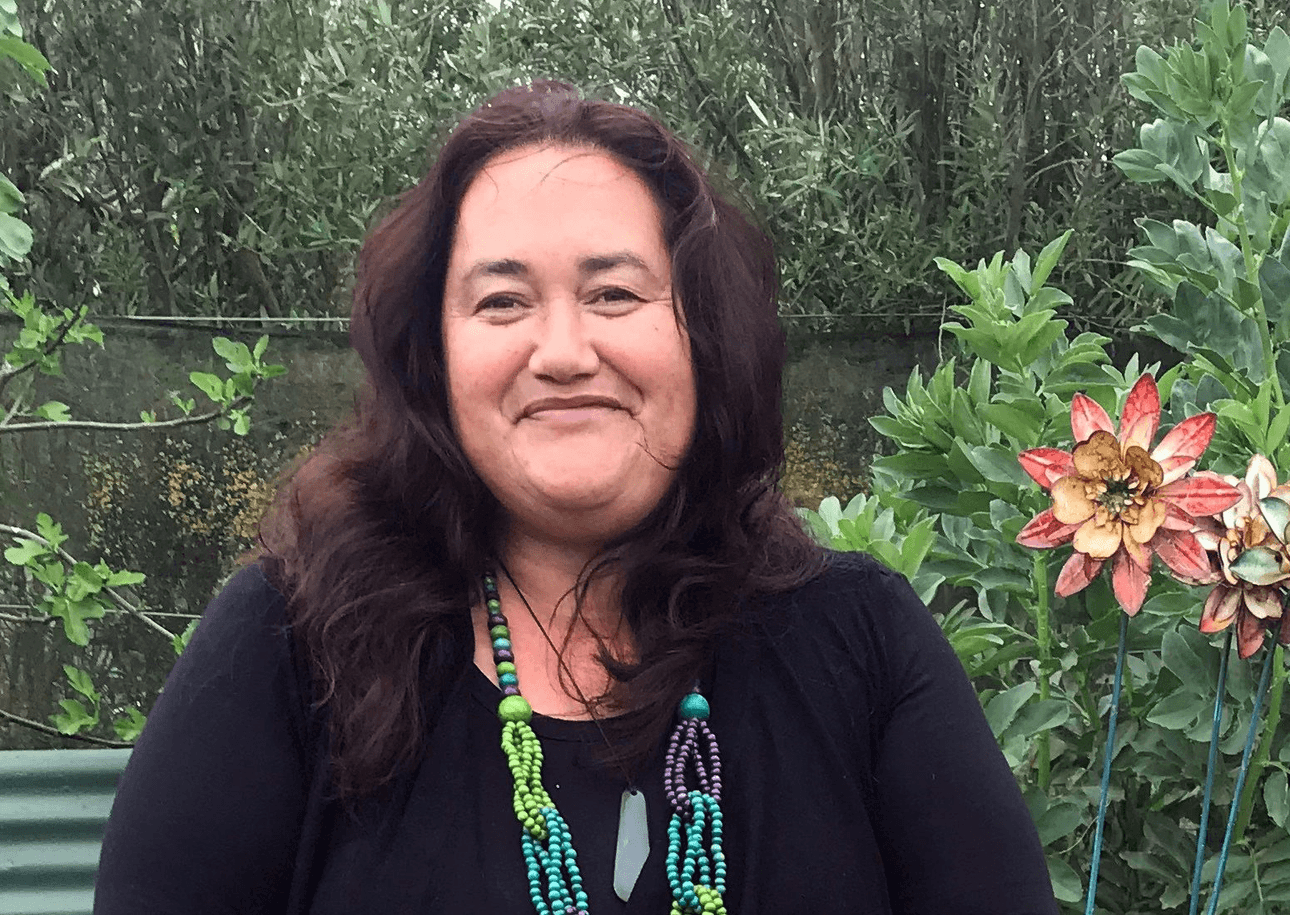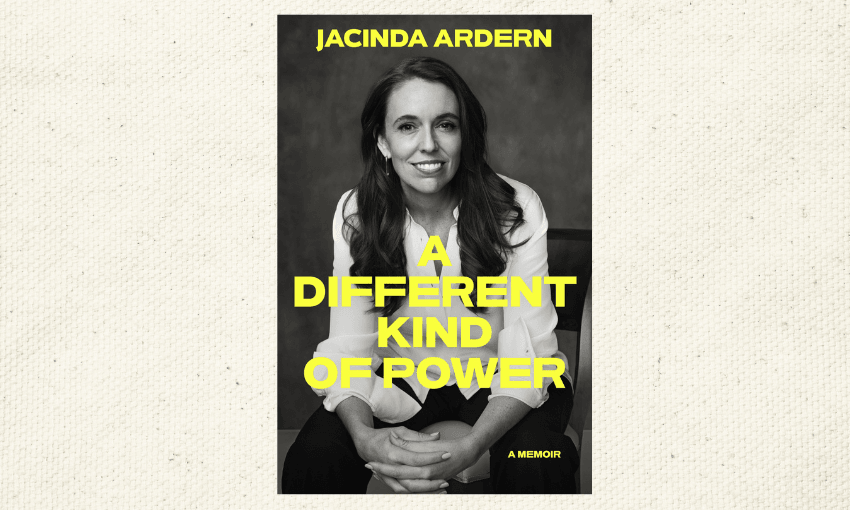Claire Mabey recounts her first time travelling with Storylines, an organisation that tours writers to schools.
Twenty-five schools. 2081 students. 1129 kilometres. No onion, no garlic, no gluten, no prawns, no cats. We’re an allergic lot, the eight of us on the Storylines Tairāwhiti tour 2025.
For years I’d heard about how the Storylines Children’s Literature Charitable Trust gathers a bunch of children’s writers into a van and tours them around a specific region, to visit multiple schools a day for five days straight. The kaupapa of these packed roadies is “to inspire children and young adults to enjoy the magic of books and reading, especially reading books created for them by New Zealand writers and illustrators.”
Storylines’ Tairāwhiti tour 2025 is Apirana Taylor (Te Whānau-ā-Apanui, Ngāti Porou and Ngāti Ruanui), Moira Wairama, Maria Gill, Melanie Koster, illustrator Rebecca “Bex” Gibbs (Rongowhakaata) and me. Anne Dickson is our driver, and Rosemary Tisdall is our wrangler.
For five days we travel together across Tairāwhiti where pools of flood water still glisten under the sun and school fields are boggy with Cyclone Gabrielle’s long and destructive tail.
Day One: Te Wharau School, Kaiti School, Elgin School, Riverdale School, Gisborne Boys’ High School, Rere School
After a coffee stop ($4 for a flat white) we drop Api and Moira to Te Wharau School (it’s the first time Storylines has made kura kaupapa connections and Api and Moira – writers and storytellers of vast talent and experience in both te reo Māori and English – mostly visit those) while the rest of us travel on to Kaiti.
Kaiti School is humming. Stunning murals, lots of gardens. A mihi whakatau welcomes us in and from there the four of us are led to different classrooms.
“You’re with the zany teacher,” I’m told. The classroom is alive with artwork that covers the walls. The cover of my novel is up on the whiteboard. The kids are sitting on the mat and I’m ushered into a comfy chair at the front of the room. All the small faces are focussed so intently I’m almost overwhelmed. “Mōrena kōkā Claire.” I learn here that the word “kōkā” is like “whaea”. I will love hearing it for the next five days.
I show the kids some of Margaret Mahy’s picture books, copies I’ve had since I was their age (six) – The Boy with Two Shadows, and Jam – that inspired me so much. The kids lean in, point at the illustrations. I tell them about how my last name used to confuse me – that I didn’t know it was different to the word “maybe” and they laugh. We talk about how words can be slippery fish. One tiny girl stands up and reads me her story about Māui slowing the sun and it’s terrific – so clear. We applaud her. The “zany” teacher tells me how every day they have “office time” – she puts on music to help get in the zone and the kids can draw or write.
There’s kōkā-made magic in this room.
When it’s time for me to go the kids sing a waiata and I am proudly gifted a huge bottle of water and bombarded with hugs.
Riverdale School is next. A dip in my stamina is a signal of what’s to come. You have to keep dragging up the energy: every class is different and deserving of your best. Over time I come to find that the energy comes from the eyes. The kids looking at you just like you looked at the adults who landed in front of your class as if from outer space, bearing news of another planet.
After our talks in the staff room, Maria and I make instant coffee and eat cookies while the principal tells us that in this area life can be tough and they work hard to make school a safe place. She’s grateful their school lunch contract is with the YMCA who consistently deliver good food. Leftovers go home with the kids.
Our last stop is Rere School. It’s beautiful, around 30 kids on the roll, up in the hills – we’re given great big Granny Smith apples fresh from the principal’s tree. They have a superb school library with old hardbacks of Mahy’s novels. We do a group presentation – the first time we get to see what we each do. We’re all different – Melanie brings out instruments and helps the kids create a poem inspired by sound; Bex draws Simba from The Lion King on the whiteboard and blows their minds; Maria tells true stories about animals who served in the wars; and I talk about how stories have made me.
Afterward some of the kids eagerly show us the comic book they’ve made together. It’s so good. They’re so proud.
Day two: Makaraka School, Te Kura o Muriwai, St Joseph’s School, Te Kura Tuatahi o te Wairoa, Wairoa College, Frasertown School, Te Kura o Waikaremoana; public event at HB Williams Memorial Library
We are split up. Melanie and I go to Makaraka School and marvel at their astonishing library. There must be hundreds of picture books. We do a joint presentation using AV for the first time (I learn, quickly, how to chromecast) and the kids ask a lot of questions: a good sign, I’m learning.
Anne Dickson is our van driver. She and our Hertz rental van eat the kilometres with such ease while Rosemary Tisdall keeps us on schedule. They’re such safe hands I don’t bother to read the spreadsheet but let myself be driven into the day’s activities like a rolling stone.
St Joseph’s is a lovely school in Wairoa, a seaside town about an hour out of Gisborne. All of the buildings are lemon yellow. I have another instant coffee, more kai, and sit in the staff room and hear a story about the local vape shop that also sells sex toys.
I do two sessions, one after the other. A talk about reading and stories with the young ones, and a worldbuilding workshop with the year 7-8s. It’s the best workshop I’ve done: the kids have such great ideas and are so respectful of each other’s thoughts. I can see them all writing their ideas down. I have no idea how far this lesson will go in their lives but I do get asked if I’ll be back tomorrow.
Storylines have scheduled us to do a public talk at the HB Williams Library. Katarina is the librarian who has organised it and she’s got all sorts of snacks ready. A handful of people show up and we each talk about how we came to be writers before answering questions. There’s a reporter there from the Gisborne Herald. She takes a photo and says maybe the article will be up by Friday.
I sleep like a stone.
Day Three: Ngātapa School, Te Karaka Area School, Te Kura Kaupapa Māori o Whatatutu, Matawai School, Mōtū School
Rosemary warns that Wednesday is the hardest. When you can’t bear to repeat yourself again, when your energy is on the wane.
But I love this day. We all go to Ngātapa School where there are 13 kids. We each talk for five minutes and it’s wonderful to finally see Moira and Api in action. Api weaves magic with taonga pūoro, a flute he was given when he toured with an indigenous artist from America, and just two words, “manu rōreka”. Moira is like a circus master: keeping the little faces entranced. One little boy shows me his stories about Crabby and even at age six he’s got a way with sentences.
After that we split up again. Melanie and I journey to weka country – Mōtū School has seven kids, and three are off sick. We are given sausage rolls and tomato sauce and sandwiches with no crusts for lunch. The kids talk about the weka, how annoying they are. We tell them those weka tales would make great stories. I leave with a handful of feijoas from a box going free by the front door.
On the drive back we pick up Api and Moira and they tell us they’ve had the best time. Api has a new story about being distracted mid-poem by the smell of pūhā and pork bones on the boil. Te Kura Kaupapa Māori o Whatatutu sounds idyllic – no school bells, working on their own time, their own way.
We go to Thai Sunshine for dinner and the woman who serves us remembers all our orders – allergies and all – without writing it down. The food is so good and we’re in such good spirits we vow to go back.
Day four: Whangara School, Tolaga Area Bay, Makarika School, Te Kura Kaupapa Maori o Te Waiū o Ngāti Porou
After admiring ourselves on the front page of the Gisborne Herald, we drive to Whangara School. It’s picturesque: sparkling sea all the way until we ascend and climb to Whale Rider country. I have a lame urge to tell Witi Ihimaera where we’re going. It was his novel that showed me it first.
The school is a picture of colour and trees and there’s Paikea and the whale painted and carved. I love the gumboots outside the classroom and the poi hung up with the school bags. Rosemary stays with us while Anne drives Api and Moira to Tolaga Bay.
Melanie and I are in the historic part of Whangara School. Small and wooden like a treehouse. They’re gorgeous kids from age five to around nine. One older boy has a mind for dark stories and loves Stranger Things and Goosebumps: great taste, I tell him.
After that we head to Tolaga Bay to pick up Api and Moira and go to Tokomaru Bay for Paua Pies. Api is starving and eats two. I go and visit the secondhand shop over the road and pat Pip the fox terrier. Bex buys bone earrings.
Te Puea Springs is glistening and glassy as we pass. We discuss swans: how I hate them. And geese. Bex talks about picking asparagus. Bex knows a lot of things and we all agree she’d be an asset on any pub quiz team. At some point we talk about immune systems. We cover a lot of conversational ground in the van which is an excellent distraction from car sickness. I’ve lost count of the number of kārearea we’ve spied flying up from roadkill or above fields.
We drop Api and Moira to Te Kura Kaupapa Māori o Te Waiū o Ngāti Porou and the rest of us go on to Makarika, which has a roll of about 38 kids. It’s on this stretch of road we see the worst of the flood damage. Massive rocks tossed into a wide open gash in the land: steel reinforcements rippled like paper.
Makarika is bathed in sunlight. There’s a kitchen in the middle of the school building with recipes for tomato relish and banana muffins written on a huge whiteboard. Bex leaves cute little illustrations beside them. We plate up the kai (roast chicken, buns, salad, school-made tomato relish) that’s been prepared for us and sit in the sun.
The kids have lunch delivered in paper containers: delicious looking mac and cheese. There’s a huge box of fruit too, from the fruit in schools programme: we’re encouraged to tuck into as there’s much of it. Perfect little Jazz apples and tart mandarins.
The session is a group presentation and it’s one of my favourites. The kids are attentive and offer back their own stories to us; and a waiata to close.
On the drive back to Gisborne and back to Thai Sunshine, Api tells us about living in Tokomaru Bay, his mother, and stories of the powerful wāhine Māori of this land and how their mana extended far. He and Moira talk about Kāterina Te Heikōkō Mataira and Ngoingoi Pewhairangi and how their work was instrumental in revitalising te reo Māori.
I stupidly remark that “Tolaga” doesn’t sound like kupu Māori and Api says god knows why this place is called that. The real name is “Uawa”.
The drive goes fast.
Day five – Te Kura Kaupapa Maori o Ngā Uri a Māui, Gisborne Girls’ High School, Waerenga-o-Kuri School
Last day already. We check out of Pacific Bay Motel (lovely, central spot, highly recommend it) and drive by the protestors to give them the food we’ve over-bought before Anne delivers us to our various final destinations. Api and Moira to Te Kura Kaupapa Maori o Ngā Uri a Māui; Maria to Gisborne Girls’ High School; and Melanie, Bex and I to Waerenga-o-Kuri which is up in the hills and has magnificent views and plenty of weka.
I give a presentation to the senior kids (about 13 of them) and it feels like my best. Finally got the full swing of it. There’s a super keen boy in the front and he’s bursting with questions. He emboldens the rest and I get the best questions of the tour so far.
“Are you the hero of your own story?”
“What books inspired you?”
“You’re pretty.”
At the airport it’s weird. Too soon. We swap books. Flights are delayed. We all leave Api there and suddenly I have so many more questions to ask him. He has so many stories. We only skimmed the surface of the times he spent in a writing group with Keri Hulme, Rowley Habib, Patricia Grace.
We just got started and now it’s over.
Afterword
Certain kids stand out. The “office time” artists at Kaiti; The Stranger Things fan at Whangara; the keen-as kid at Waerenga-o-Kuri; the St Joseph’s worldbuilders; the Mōtū weka stories. Lots of others.
Teachers make a school: everywhere we went kōkā were creating atmospheres of safety, resilience, manaakitanga, nourishment, play, creativity and respect.
It’s hard to know the impact of a 45-minute visit on a child. But the impact on us, as writers, is something like passing energy forward and getting a new wave of energy back. We write for these kids because we write for the kids in us. It’s like a strange, ever-turning circuit between the writers before, the writers now, the writers ahead.
The writers who came before us. Kāterina Te Heikōkō Mataira and Ngoingoi Pewhairangi; Margaret Mahy, Patricia Grace, Rowley Habib. They’re there with us all the time in our conversation; the ones who inspired us.
School libraries. Every school we went to had a library. They’re essential. If you want kids to read, give them access to books.
Eyes.
Hugs.






